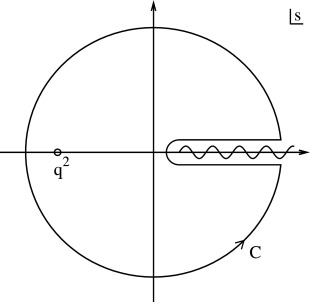At a very general level, an autonomous evolution differential equation writes
$$\frac{du}{dt}=Lu,$$
where $L$, an unbounded linear operator, can be rather complicated. For instance, in parabolic systems of conservation laws, we encouter 2nd-order differential (in space variables) operator with variable coefficients, and $u=(u_1,\ldots,u_m)$ is vector valued. The differential system is then completed with boundary conditions, which may be more complicated than just Dirichlet or Neuman.
Typically, the situation above arises when studying the stability of steady solutions of non-linear problem. This study is split into three intermediate steps:
- Spectral stability: is the spectrum of $L$ included in the left half of the complex plane ?
- Linear stability: if so, is the semi-group $S_t=e^{tL}$ bounded ? What dissipation inequality does it display ?
- From linear to nonlinear stability. Here one uses the Duhamel formula and a fixed point argument.
Contours of integration arise in the second step above. One expresses $S_t$ as a Cauchy integral, in terms of the resolvent $R(z)=(z I-L)^{-1}$, the latter being well-defined and holomorphic over the resolvent set $\rho(L)$. One integrates over a contour $\Gamma\subset\rho(L)$. In practice, the branches at infinity stay away (from the left) of the imaginary axis ; it is ensured by a property of the essential spectrum.
One typical difficulty is that the steady solution $\phi$ is often not isolated, because it can be translated in space. This implies that $z=0$ belongs to the spectrum. For instance, in one space dimension, we have $L\frac{d\phi}{dx}=0$. Thus the contour must pass somewhere in the right half-plane, to avoid $z=0$. But of course, establishing good estimates for $S_t$ requires that $\Gamma$ be $\epsilon$-close to $z=0$.
As you can see, this is a general philosophy. The details vary according to the differential equation under consideration. It was initiated by D. H. Sattinger in 1977 and then considerably developped until recent times by many authors. It is a very active research topic.







